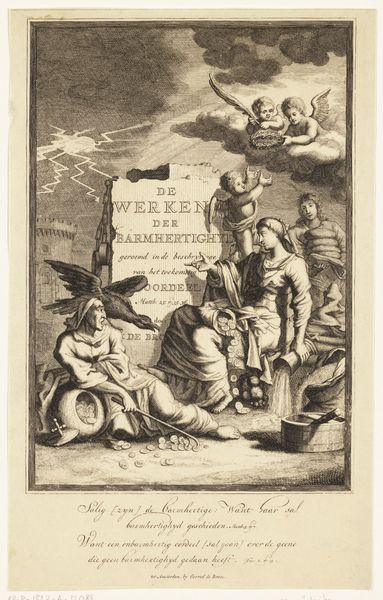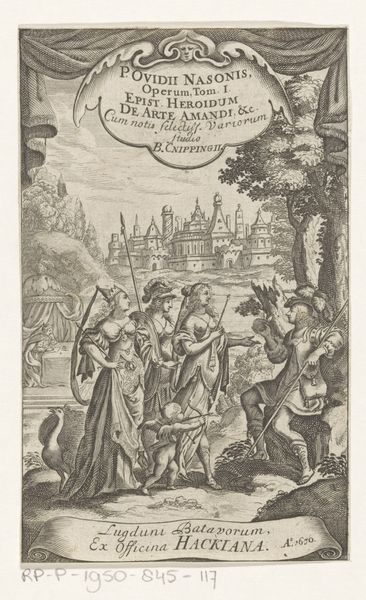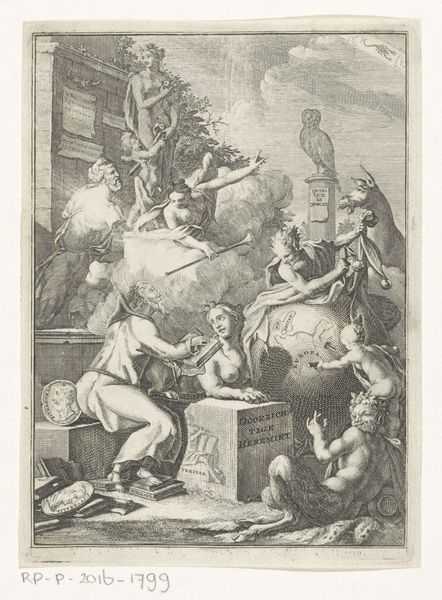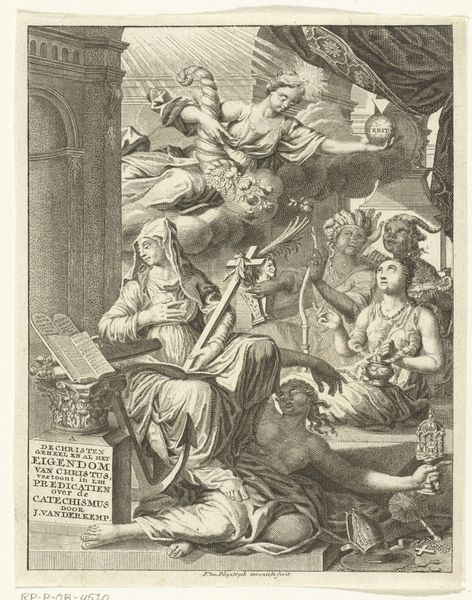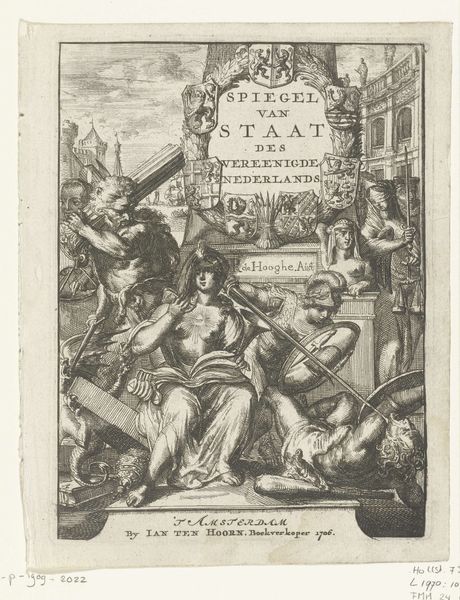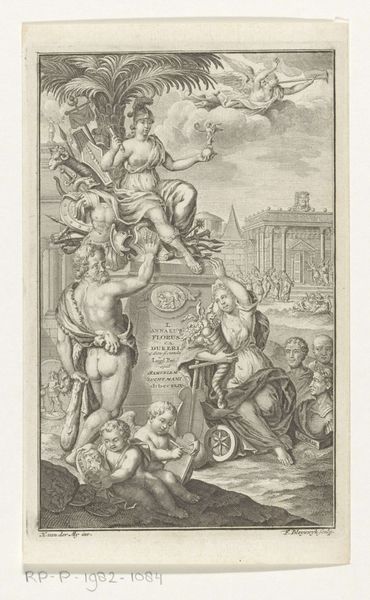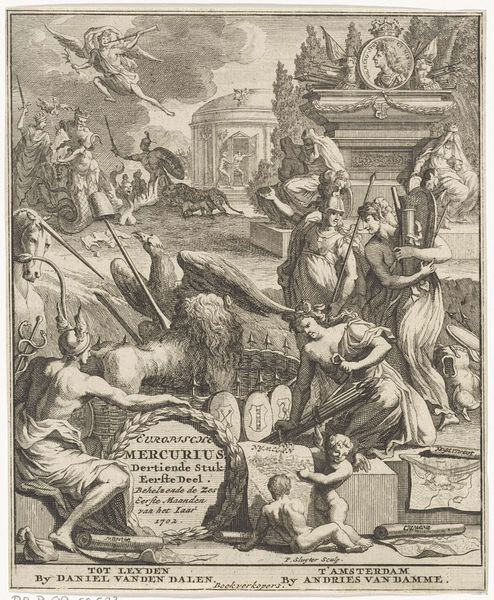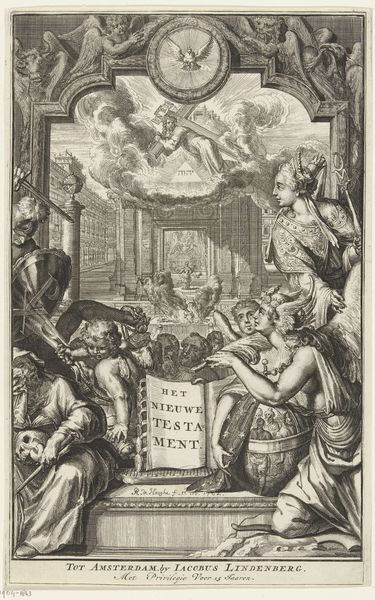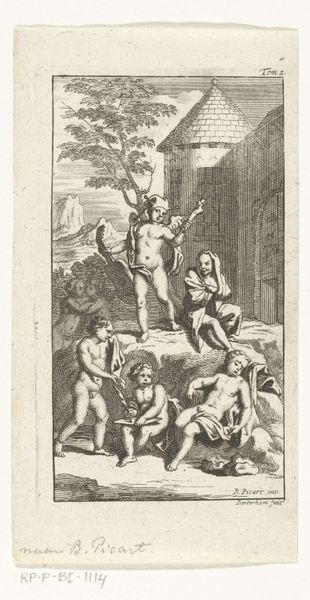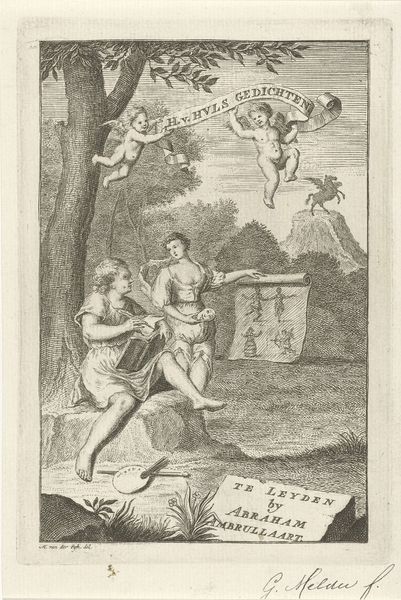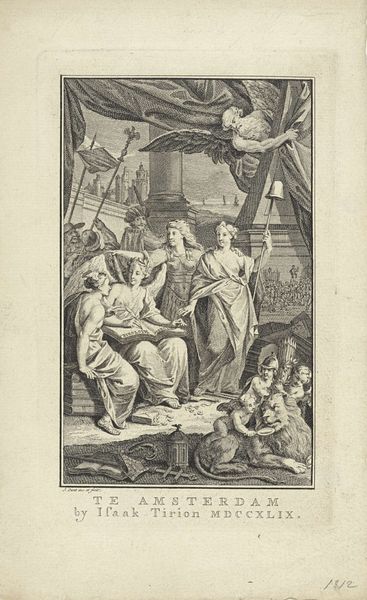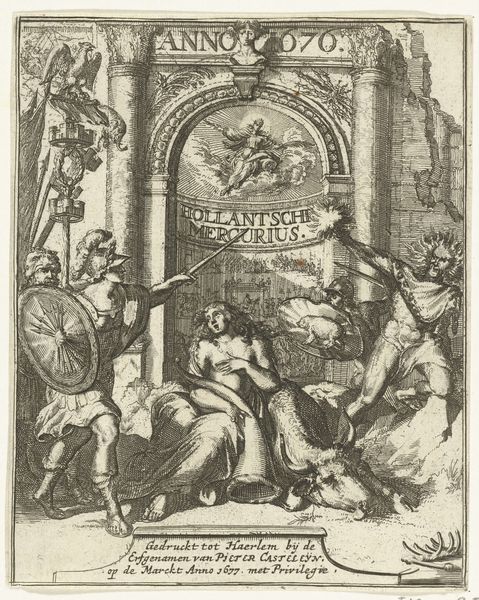
print, engraving
aged paper
allegory
baroque
old engraving style
traditional media
figuration
line
cityscape
history-painting
engraving
Dimensions: height 145 mm, width 88 mm
Copyright: Rijks Museum: Open Domain
Curator: The textures in this print really caught my eye; what is your immediate reaction? Editor: Stark. The lines create high contrast, giving it an almost theatrical mood with the juxtaposition of mourning and… is that a jester? It’s jarring. Curator: That's right! This piece, dating from 1756, is an engraving titled "Allegorical Representation with Mourning Woman and Dancing Momus." It’s by an anonymous artist but published in Amsterdam by Jan Mortierre. Editor: "Momus?" I'm intrigued. Tell me more about the figure of the jester dancing across the foreground. His hat is wild! Curator: Momus, in Greek mythology, embodies satire and mockery. He often appears as a critic of the gods. So, in this print, we see him dancing seemingly oblivious to the sorrowful woman beside him. He carries a sign in Latin: "Dulcis medicina dolorum" or "sweet medicine for sorrows" Editor: So, is the allegory pointing to laughter, or distraction, as a way to ease pain? The city looming in the background – the sharp geometries, contrasting with the organic shapes in the foreground – suggest something artificial at play. Curator: Precisely. Look at the details: A child figure displays another sign about amusement for sale; a satyr-like musician sits playing idly. These elements collectively critique superficial pleasures that only mask deeper grief. Editor: Interesting. The artist uses a classical composition, directing your eye to this kind of central emotional axis where grief sits. Yet it feels fractured, disturbed by these conflicting images… perhaps even relevant today? Curator: Indeed. The print, with its detailed rendering, provides layers to explore; how do cultures cope with suffering through spectacle, entertainment, or other fleeting remedies? The questions still remain. Editor: Absolutely. A stark and potent composition; it reveals art's function to provoke reflection—and possibly discomfort. Curator: I agree, a small work on aged paper that prompts expansive thinking on timeless subjects.
Comments
No comments
Be the first to comment and join the conversation on the ultimate creative platform.
